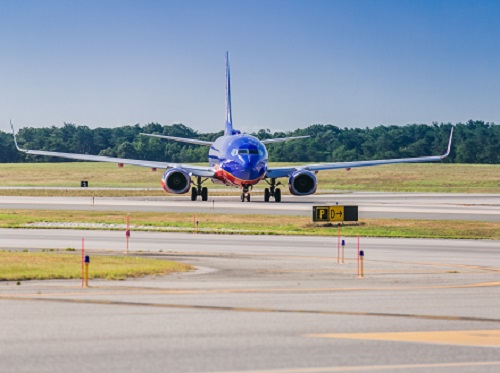The Federal Aviation Administration recently issued $201 million to 82 airports nationwide to improve runway lighting systems. The agency is also accepting applications for nearly $300 million in grants to reduce carbon emissions from the aviation sector.
[Above photo by Jacob Kang for the FAA]
“Ensuring our pilots can safely navigate runways and taxiways with adequate and improved lighting systems is a top priority as we continue our focus on runway safety initiatives,” explained Shannetta Griffin, FAA’s associate administrator for airports, in a statement.
In March, the FAA held a Safety Summit to address a spate of runway-related incidents. The summit brought together leaders from across the aviation sector, including airlines, airports, flight and ground crews, air traffic control, and associations to find potential causes and needed actions to uphold safety.
As a result of that summit, the FAA said it has introduced several runway safety technologies to provide pilots and controllers increased situational awareness.
- Runway Status Lights: The in-pavement lights alert pilots that entering a runway is unsafe due to other traffic on or approaching the runway.
- Airport Surface Detection Equipment, Model X (ASDE-X): A surveillance system using radar and satellite technology that allows air traffic controllers to track surface movement of aircraft and vehicles. It or its sister system, Airport Surface Surveillance Capability, is located at the country’s 43 largest airports.
- ASDE-X Taxiway Arrival Prediction: Predicts when a pilot lines up to land on a taxiway and provides a visual and audible alert to controllers.
Concurrently, the FAA is now accepting applications for $245 million worth of grant funding for Sustainable Aviation Fuels or SAF infrastructure projects and $47 million in low-emission aviation technology projects.
The agency said in a separate statement that its new Fueling Aviation’s Sustainable Transition or FAST-SAF grants focus on producing, transporting, and blending sustainable aviation fuel – with the projects those grants support helping build up regional SAF supply chains and increase SAF use.
FAST-Tech funds will accelerate aviation technology projects that reduce greenhouse gas emissions, improve aircraft fuel efficiency and increase the usage of sustainable aviation fuel, FAA noted. Eligible entities for the program are broad. They include airports, air carriers, universities, aviation and aerospace companies, state and local governments and nonprofit organizations.
The competitive grant process opens on Sept. 25. The FAA’s target for the first round of grant awards is mid-2024.
 Nation
Nation
Registration Open for AASHTO’s Winter Rail Meeting
December 19, 2025 Nation
Nation

